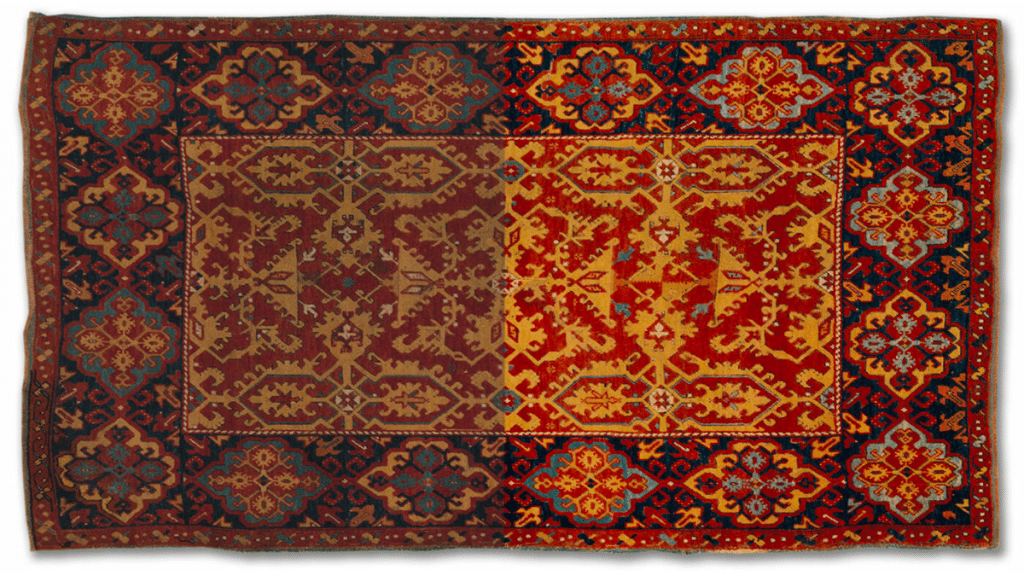Rugs are more than just floor coverings; they are pieces of art that can hold history, culture, and memories. Over time, however, even the most cherished rugs can wear out, accumulate damage, or fade. When this happens, rug restoration becomes essential to preserve their beauty and value. Understanding the art of rug restoration can help you appreciate the detailed work that goes into reviving these treasures.
If you have a damaged rug or one showing signs of age, consider seeking out professional rug repair services to restore it to its original glory.
1. Understanding the Types of Rug Damage
Rugs can face different types of damage over the years. The most common issues include:
- Wear and Tear: High-traffic areas can cause the pile to wear down, leaving the rug looking thin and threadbare.
- Fringe Damage: The fringe of a rug is particularly vulnerable, and over time, it can unravel or become frayed.
- Fading: Prolonged exposure to sunlight can cause the colors of a rug to fade, especially in older or antique pieces.
- Stains and Spots: Accidents happen, and spills can leave unsightly stains that may be difficult to remove without damaging the fibers.
- Moth Damage: Rugs stored in damp or unventilated areas can fall prey to moth larvae, which feed on natural fibers, causing irreparable damage.
Identifying the type of damage your rug has sustained is the first step in the restoration process. It’s crucial to act quickly, as delaying repairs can lead to further deterioration.
2. The Process of Rug Restoration
Rug restoration is a meticulous process that requires skill and patience. Professional restorers use traditional techniques and tools to match the original craftsmanship of each rug. Here’s an overview of the common restoration steps:
- Assessment: The first step is to assess the rug’s condition, examining the type and extent of damage. Restorers analyze the rug’s construction, age, and material to determine the best approach.
- Reweaving: For areas that have worn thin or have holes, professional restorers use hand-reweaving techniques. This process involves carefully matching the original weaving pattern and using threads that are similar in color and material to the original.
- Fringe Repair: Fringes are integral to the structure of the rug. Restorers can reattach or replace the fringe to prevent further unraveling and maintain the rug’s integrity.
- Color Restoration: Faded areas of the rug can be carefully retouched with natural or chemical dyes. This requires precision and a deep understanding of color blending to achieve a seamless look.
- Deep Cleaning: Before starting any repair work, the rug is thoroughly cleaned to remove dirt and residue. Professionals use specialized techniques to ensure the rug is not damaged during the cleaning process.
3. Restoration vs. Replacement: When to Choose Each
Deciding whether to restore or replace a damaged rug can be challenging. It often depends on factors such as the rug’s value, age, and sentimental significance. Here’s a quick guideline to help you decide:
- Choose Restoration if: The rug is antique, holds sentimental value, or is a high-quality piece worth preserving. In these cases, restoration can help maintain the rug’s authenticity and extend its lifespan.
- Choose Replacement if: The damage is extensive, and the rug is not of significant value. In such cases, replacing the rug might be a more cost-effective solution.
Professional restorers can provide an assessment to help you determine the best course of action based on the rug’s condition and value.
4. The Importance of Regular Maintenance
Regular maintenance is key to extending the life of your rug and preventing costly repairs. Here are some essential maintenance tips:
- Rotate Your Rug: Rotate your rug every few months to ensure even wear and prevent certain areas from fading more quickly than others.
- Use a Rug Pad: A rug pad not only prevents slipping but also provides additional cushioning and helps distribute weight evenly, reducing wear.
- Vacuum Carefully: Use a vacuum cleaner without a beater bar to avoid pulling the rug’s fibers. For delicate rugs, consider using a handheld vacuum or brush.
- Protect from Sunlight: Direct sunlight can cause rugs to fade over time. Consider using curtains or blinds to protect your rug from prolonged exposure.
5. Choosing the Right Restoration Specialist
When selecting a restoration specialist, look for experience and expertise in handling your type of rug. Antique and handmade rugs require special care, so it’s crucial to find a restorer who understands the unique weaving techniques and materials used. Ask about the specialist’s previous work, and request references or testimonials from past clients.
It’s also wise to choose a company that offers a comprehensive range of rug repair services, from cleaning to color restoration. This ensures that your rug receives the appropriate care at every stage of the restoration process.
Final Thoughts
Rug restoration is an intricate art that requires skill, patience, and an eye for detail. Whether your rug has suffered from wear and tear, fringe damage, or color fading, professionals can help breathe new life into your cherished piece.
Preserving a rug’s beauty and value is not just about repairs—it’s about respecting its history and craftsmanship. By choosing the right restoration specialist and taking proactive measures to maintain your rug, you can enjoy its beauty for generations to come.
